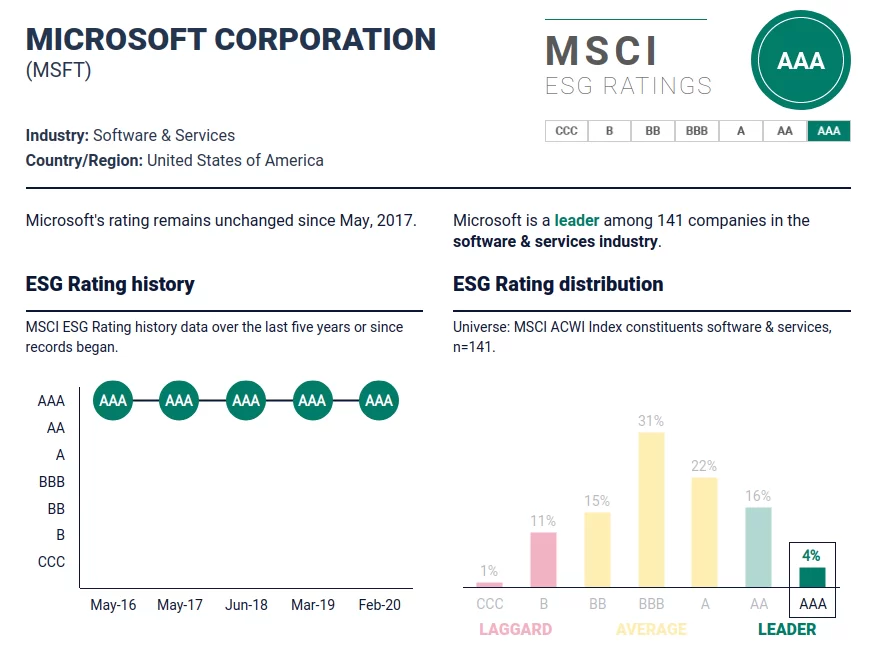
The economy changes rapidly; so, too, does the way people invest. And in recent years, socially responsible investing (SRI) has seen increasing popularity.
There are many reasons for the increase. One of the biggest reasons has been the long-held belief that investing in ways that align with our values means accepting a lower rate of return.
But it’s becoming increasingly clear that that is not the case.
In addition, socially-responsible investing is becoming more accessible as more firms add value-based options to their services.
In this post, we’ll take a look at what some of those options are and why they don’t necessarily require investors to compromise on returns.
Socially-Responsible Investing
Socially-responsible investing can mean different things depending on who you ask. However, SRI generally involves investing in line with environment, social, and governance (ESG) issues.
Funds with an ESG focus invest in companies that are addressing ESG issues and actively avoid those with a poor track record in those areas.
One of the investment advisors making SRI more accessible is Betterment. It initially added a socially-responsible Betterment portfolio in 2017, then expanded those offerings in 2020.
Other robo-advisors, including M1 Finance, Personal Capital, and Ellevest have SRI options as well.
Related: M1 Finance vs. Betterment
How Do We Quantify Social Responsibility?
One important point about SRI is that there must be a way to quantify it. In other words, we must have real, observable data.
Without such data, we could only make subjective assessments of how different investments meet ESG criteria.
Fortunately, there are a few organizations that evaluate SRIs using a data-driven approach. Two such organizations are MSCI and Fossil Free funds.
MSCI Ratings
Data from MSCI is one of the main criteria Betterment uses to assess its ESG funds. MSCI’s comprehensive assessment uses three pillars to score ESG investments: environment, social, governance.
Those then filter down to 10 themes and 37 key issues. It suffices to say that MSCI conducts a thorough analysis. From its website:
“We use technology and AI, combined with our 200+ strong team of ESG analysts, to extract investment-relevant insights from unstructured data. Machine learning and natural language processing help us increase the timeliness and precision of data collection, analysis and validation to deliver dynamic content.”
In particular, MSCI collects data from the following sources:
- Alternative data including government, regulatory and NGO datasets
- Company disclosure documents
- 2,100 media sources
It uses more than 1,000 data points to assign each organization a grade. You can check any organization’s grade by visiting its ESG ratings page.

As you can see, each company is assigned a rating ranging from AAA (ESG leader) to CCC (ESG laggard).
Fossil Free Funds
Another way ESG-conscious investors can research investments is to check Fossil Free Funds.
As its name implies, this website focuses on divesting from fossil fuels, but it has search filters that include filtering by grade for the following criteria:
- Deforestation
- Gender equality
- Weapons grades
These are just a few of the filters you can use to find the funds that align with your values.
This website is helpful because of the breakdown it gives for each fund. You’ll see different breakdowns for fossil fuels, carbon footprint, and Clean2020.
The site tells you exactly what dollar amount is invested in fossil fuels, plus what percentage of assets are invested in particular industries, such as coal and oil/gas.
ESG Data Limitations
One issue with ESG data is that ESG is still in its infancy, and reporting can be unreliable. Betterment says that some companies don’t report ESG data at all, and some that do report it in an inconsistent way.
It is for that reason that Betterment uses MSCI data to make decisions about which funds to include in its portfolios.
Because ESG is such a new initiative, it is inevitable that there will be some inconsistencies.
Those will likely improve in the coming years; for now, investors should use data from organizations such as MSCI and Fossil Free Funds to make informed decisions.
What About Returns?
It is something of a misconception that investing in ESG funds yield lower investment returns. The reality is that, in the long run, returns are incredibly similar.
In fact, Morgan Stanley conducted a study of more than 11,000 mutual funds from 2004 to 2018. The result? No discernible difference in the performance of ESG funds compared to more traditional funds.
Betterment also showed several comparisons of its Broad Impact ESG portfolio to its core offering and there is once again little difference.
As you can see here, there is very little difference in the two portfolios with a 99.23% correlation.
Socially-Responsible Investing and Young Investors
Another development to watch is how young adults decide to invest their money. Capital gains tax and the sheer hassle of moving investments may be reason enough for older investors’ money to stay put.
However, younger investors who are just starting to build wealth now have sustainable options to consider. And they are indeed considering them.
In fact, 76 percent of Millennial and Gen Z investors have reviewed their investments for ESG impact. Millennial investors are twice as likely to invest in companies with ESG initiatives.
Another stat from the same article linked above is that, according to Morningstar, the number of ETFs with a socially-responsible focus has doubled since just 2017, to 234 funds.
While this is all very new, we are seeing trends that not only suggest growth in ESG popularity but that most younger investors have seriously considered investing in a socially-responsible way.
What it Means for Investing
As more data is collected on socially-responsible investments, more and more investors are starting to re-evaluate the ways in which they invest.
Previously, investors believed they would have to sacrifice a significant amount of returns in order to invest responsibly. Needless to say, that was a deal-breaker for most.
But we are now seeing that that is not the case. Although most ESG funds do not completely divest from all non-ESG investments, they do highly prioritize those with an ESG initiative.
The result is that these funds, which are prioritizing socially-responsible issues, perform just about as well as their non-ESG counterparts.
ESG investing is still very new, but it continues to show strong results. Investors sacrifice little to nothing by way of returns yet are able to invest in what they value.
How to Invest in ESG Funds
I mentioned above that several robo-advisors now have ESG options. One of the easiest ways to get started is to open a Betterment account (if you don’t already have one). Then, you can create one of its three types of ESG portfolios: Broad Impact, Climate Impact, or Social Impact.
Of course, Betterment is not the only way to invest in these funds. Other investment advisors have pre-built ESG portfolios.
If you are more of a DIY investor, you can always just buy your own ESG ETFs in a brokerage account. There are over 200 ESG ETFs (and counting) available today.
One easy way to find highly-rated funds on Fossil Free Funds. Despite its name, the site has filters for multiple ESG criteria.
As more and more investment advisors add ESG options, it will only get easier to invest in ESG funds. However, early data suggests that investors won’t have to take a loss of returns to invest in a way that aligns with their values.
And that is undoubtedly an encouraging sign for the future of investing.




